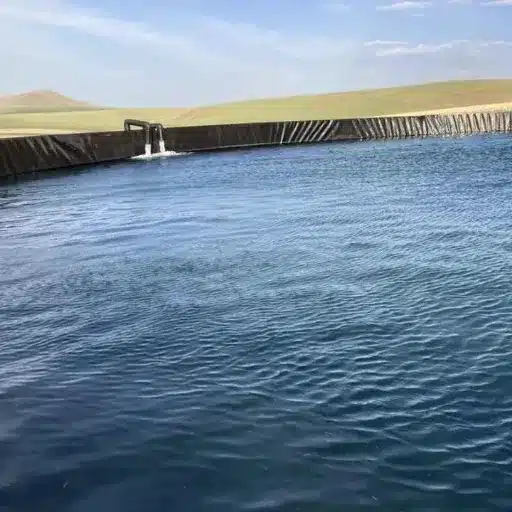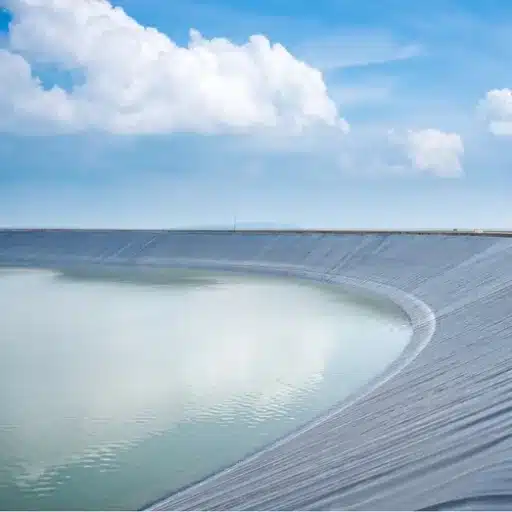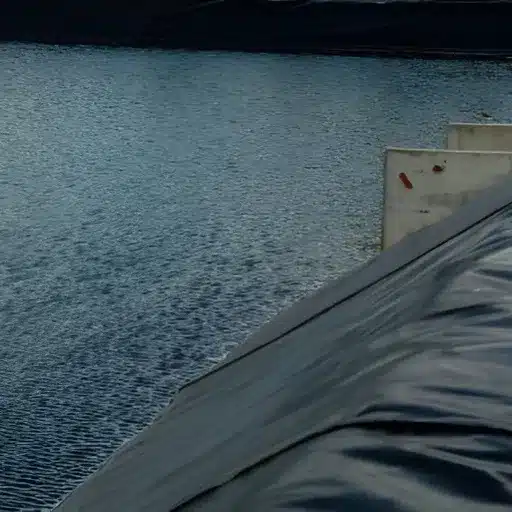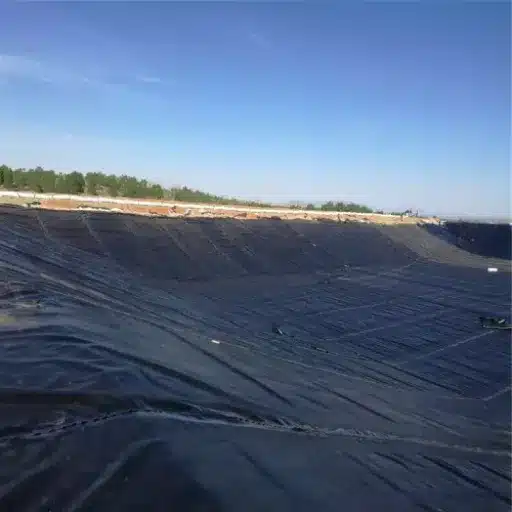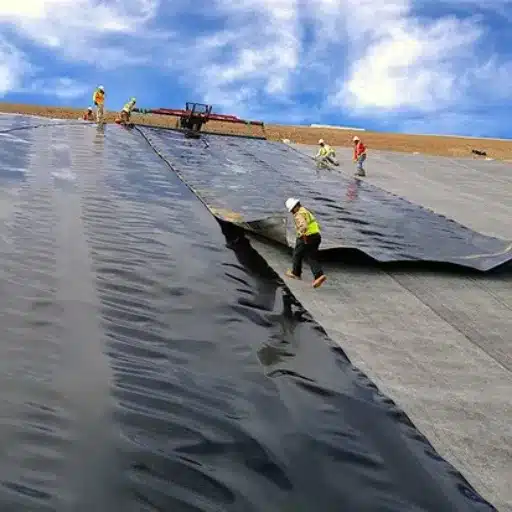When it comes to building and maintaining a pond, choosing the right liner is a critical decision that can significantly impact the pond’s longevity, functionality, and environmental footprint. Among the most popular options, HDPE (High-Density Polyethylene) and EPDM (Ethylene Propylene Diene Monomer) liners stand out for their unique properties and applications. However, understanding the differences between these two materials can feel overwhelming without the right information. This blog post will break down the key distinctions between HDPE and EPDM liners, helping you make an informed choice tailored to your specific needs. Whether you’re designing a small backyard oasis or a large-scale water feature, this guide will provide the insights you need to kickstart your project with confidence.
What is an HDPE Pond Liner?
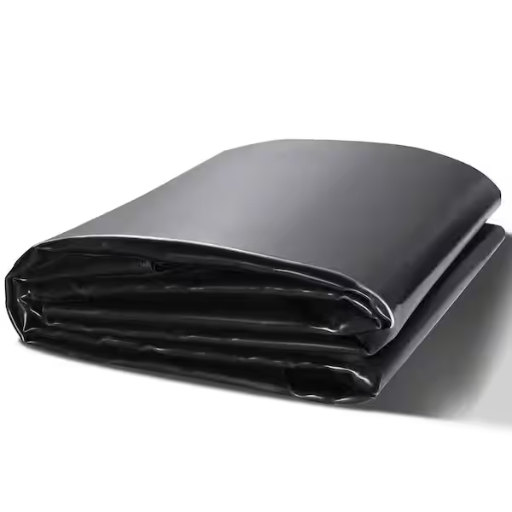
HDPE (High-Density Polyethylene) pond liners are durable, flexible sheets made from a high-strength plastic material. They are widely used for water containment because of their resistance to UV rays, chemicals, and punctures. HDPE liners are cost-effective, environmentally friendly, and can last for many years when properly installed and maintained. Their lightweight nature makes them easier to handle, yet they remain sturdy enough for both residential and commercial applications.
Characteristics of HDPE Material
HDPE (High-Density Polyethylene) is renowned for its exceptional combination of strength, flexibility, and durability. Its high tensile strength, rated at approximately 0.20–0.40 N/mm², ensures resistance to cracking and breaking under pressure, making it an ideal material for heavy-duty applications. HDPE is impressively lightweight, with a density ranging between 0.93 and 0.97 g/cm³, which allows for easier handling and installation without compromising its robustness.
This material excels in chemical resistance, making it resistant to many acids, bases, and solvents, thereby minimizing the risk of degradation in challenging environments. Additionally, HDPE can withstand temperature ranges from -40°F to 176°F (-40°C to 80°C), offering remarkable performance in both extreme cold and heat. Its resistance to UV radiation ensures prolonged longevity in outdoor settings, as it won’t degrade or weaken under direct sunlight for extended periods.
HDPE is also valued for its environmental benefits; it is 100% recyclable and requires less energy to manufacture compared to other plastics, resulting in a lower carbon footprint. The material’s low permeability and excellent impact resistance further solidify its position as a top choice for applications like pond liners, geomembranes, and industrial containment systems. These key properties contribute to HDPE’s widespread use across a variety of industries, from agriculture to construction.
Advantages of Using HDPE Pond Liner
- Exceptional Durability and Longevity
HDPE pond liners are renowned for their long lifespan, with many lasting 20 years or more under normal conditions. Their robust structure resists punctures, tears, and degradation caused by UV radiation, making them an excellent choice for outdoor applications. Studies suggest that HDPE liners exhibit a superior performance under extreme weather conditions, ensuring reliability for extended periods.
- High Chemical Resistance
One of the standout features of HDPE pond liners is their resistance to a wide range of chemicals, including acids, alkalis, and hydrocarbons. This makes them ideal for industrial ponds, waste containment, and agricultural water storage. The material effectively prevents contamination and mitigates risks associated with chemical exposure.
- Environmental Sustainability
HDPE pond liners are not only durable but also environmentally friendly. They are made from recyclable material, contributing to reduced landfill waste. Additionally, their minimal permeability minimizes water loss, promoting water conservation—a vital aspect in areas facing water scarcity.
- Cost-Effectiveness
Compared to alternatives, HDPE liners offer exceptional value due to their durability and low maintenance requirements. They eliminate the need for frequent replacements and repairs, significantly cutting down operational costs over time. Their lightweight nature also reduces transportation and installation expenses, adding to the overall affordability.
- Ease of Installation and Flexibility
Despite being robust, HDPE liners are surprisingly flexible, allowing them to adapt to various pond shapes and sizes. Prefabricated panels and techniques like heat welding streamline the installation process, ensuring a quick and seamless setup even for large-scale projects.
- Resistance to Biological Growth
HDPE’s low permeability inhibits the growth of algae, bacteria, and other microorganisms on its surface, making it particularly suitable for aquaculture, decorative ponds, and water treatment facilities. This resistance ensures cleaner water quality and reduces maintenance efforts.
By combining these advantages, HDPE pond liners serve as a highly efficient, eco-friendly, and cost-effective solution for a vast range of applications, supporting sustainable practices while delivering long-term reliability. Their diverse uses across industries further emphasize their value in modern water management systems.
Challenges in HDPE Liner Installation
While HDPE (High-Density Polyethylene) liners are widely recognized for their durability and versatility, their installation process comes with certain challenges that require careful consideration. One of the primary difficulties involves ensuring proper surface preparation. The subgrade must be smooth, clean, and free of debris to prevent punctures or damage to the liner during placement. Irregularities such as sharp rocks or roots can compromise the liner’s integrity, potentially leading to leaks or failures over time.
Environmental factors can also pose challenges during installation. Temperature extremes significantly impact the liner material, as HDPE tends to expand under high heat and contract in colder temperatures. Installations performed in adverse weather conditions require precise techniques to accommodate such thermal expansion or contraction, maintaining the material’s fit and effectiveness.
Another hurdle is achieving proper seam welding. The quality of seam welding directly affects the impermeability of HDPE liners. Poorly welded seams increase the risk of water leakage, which could compromise the project entirely. Specialized equipment and skilled technicians are necessary to perform consistent welds that meet industry standards. Quality assurance measures, including nondestructive testing, are vital to ensuring the seams are secure.
Additionally, large-scale installations often require dealing with the liner’s weight and dimensions. Heavy-duty machinery may be needed to handle and position massive HDPE sheets effectively. Coordinating machinery, manpower, and material amidst tight schedules can complicate logistics, particularly for large or remote sites.
Finally, addressing compatibility issues with specific applications or chemical exposures is essential. HDPE liners, though chemically resistant, may still require careful selection based on the substances they will contact. For instance, continuous exposure to certain harsh chemicals or UV rays could degrade the liner faster than anticipated, necessitating the incorporation of protective measures.
According to industry insights, these challenges can be mitigated through meticulous planning, adherence to best practices, and leveraging experienced teams during the installation process. Such measures ensure that HDPE liners perform optimally while minimizing risks during and after deployment.
Exploring the Features of EPDM Pond Liner
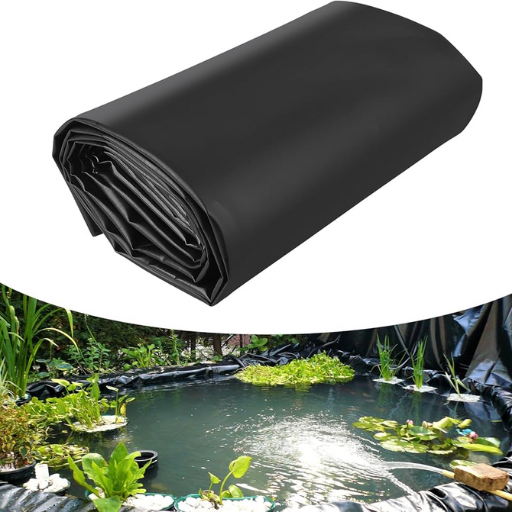
EPDM (Ethylene Propylene Diene Monomer) pond liners are valued for their flexibility, durability, and resistance to varying weather conditions. Unlike some alternatives, EPDM remains pliable even in extreme temperatures, making it highly adaptable for diverse pond shapes and sizes. It is resistant to UV rays and ozone, ensuring longevity when exposed to sunlight. Additionally, this type of liner is environmentally friendly, as it is non-toxic to aquatic life. EPDM pond liners are easy to install and require minimal maintenance, making them a reliable choice for both residential and commercial water features.
Properties of EPDM Material
EPDM (Ethylene Propylene Diene Monomer) is a synthetic rubber known for its exceptional durability and versatility in a variety of applications. One of its key properties is its impressive temperature resistance, withstanding a range from -60°F (-51°C) to 300°F (149°C), which makes it suitable for both extreme cold and high-heat environments. Additionally, EPDM boasts remarkable resistance to UV radiation, ozone, and weathering, ensuring a lifespan of up to 20 years or more when properly maintained.
This material also provides excellent water and moisture resistance, making it a preferred choice in waterproofing applications, such as pond liners and roofing systems. It has a tensile strength ranging between 7 to 21 MPa, depending on its formulation, and an elongation at break of up to 300%, showcasing its flexibility and adaptability under stress. EPDM is also chemically stable, resisting degradation by acids, alkalis, and some solvents.
Furthermore, EPDM is an eco-friendly option due to its non-toxic nature and recyclability. Because of its low installation and maintenance costs, combined with high performance in diverse environmental conditions, EPDM remains a cost-effective and sustainable material for industrial and residential projects alike.
Benefits of EPDM Liner in Ponds
- Exceptional Flexibility: EPDM liners can easily conform to the shape and contours of any pond, enabling seamless installation even in irregularly shaped designs. This flexibility also minimizes damage risks when the liner expands and contracts due to temperature fluctuations.
- Durability: EPDM is known for its remarkable durability, with a lifespan of up to 40 years under proper maintenance. Its resistance to tearing, weathering, and punctures ensures long-term performance, reducing the need for frequent replacements.
- UV and Weather Resistance: EPDM liners are engineered to resist harmful ultraviolet (UV) rays and adverse weather conditions, making them ideal for outdoor use. They maintain their structural integrity and flexibility, even after continuous exposure to sunlight and extreme climates.
- Environmentally Friendly: EPDM is a non-toxic and eco-friendly material. It does not leach harmful chemicals into the water, ensuring the safety of aquatic life. Additionally, EPDM liners are recyclable, contributing to sustainable environmental practices.
- Chemical Resistance: These liners are resistant to a wide range of chemicals, including acids and alkalis, making them ideal for ponds with diverse water conditions or those requiring specific maintenance treatments.
- Ease of Installation: With its lightweight nature and flexibility, an EPDM liner is relatively easy to install, saving time and labor costs. It requires minimal preparation and can be secured without specialized equipment.
- Cost-Effectiveness: Although the initial investment may seem higher compared to alternatives, the long lifespan, low maintenance, and lack of frequent replacements make EPDM liners a highly cost-effective solution over time.
- Fish and Plant Safe: EPDM liners are free of harmful additives or chemicals that could threaten pond ecosystems. They create a safe environment for fish, plants, and other aquatic organisms to thrive.
By leveraging these comprehensive benefits, EPDM liners provide a reliable and sustainable solution for pond construction and maintenance.
Installation Tips for EPDM Pond Liner
Installing an EPDM pond liner properly ensures its longevity, functionality, and effectiveness. Below are detailed steps and tips to help achieve a successful installation:
- Plan and Measure the Area
- Clearly define the pond’s shape, depth, and size before purchasing the liner.
- Measure the dimensions accurately, including depth and extra overlap for secure placement. Use the following formula to calculate the liner size needed:
- Liner Length = Pond Length + (2 x Maximum Depth) + 2 feet (for overhang)
- Liner Width = Pond Width + (2 x Maximum Depth) + 2 feet (for overhang)
- Excavate the Pond
- Excavate the area by digging to the planned depth and shape.
- Remove sharp objects such as rocks or roots that might damage the liner.
- Create stepped edges for plants or decorative use if desired.
- Add a Protective Underlayment
- Use a quality underlayment or a base layer of sand to protect the liner from punctures.
- Ensure the underlayment covers all excavated surfaces, including ledges and edges.
- Position and Unfold the Liner
- Carefully place the EPDM liner across the prepared area. It is advisable to do this on a warm day to make the material more flexible.
- Center the liner, allowing equal overhang on all edges for anchoring purposes.
- Smooth Out Wrinkles
- Work methodically to eliminate air pockets and smooth out wrinkles, starting from the center and moving outward.
- Be cautious not to stretch the liner too tightly as the material is designed to conform to the natural shape of the pond.
- Anchor the Liner
- Use rocks, soil, or edging material to securely anchor the liner around the pond’s perimeter.
- Ensure the overhang material is stable and blends with the landscaping.
- Fill the Pond Gradually
- Begin filling the pond with water slowly, allowing the liner to settle into place.
- Adjust the liner as needed during this process to maintain an even and secure fit.
- Trim Excess Material
- Once the pond is filled and the liner is securely anchored, trim any excess material along the edges.
- Leave a small margin for future adjustments or settling.
- Add Finishing Touches
- Integrate decorative features such as rocks, gravel, or plants to enhance the pond’s natural appearance.
- Install filtration, pumps, or waterfalls as part of the pond system.
By following these detailed steps, you can ensure your EPDM pond liner is installed efficiently and provides a durable foundation for your pond. Proper preparation and execution will translate to years of worry-free maintenance.
How to Choose the Right Pond Liner for Your Project
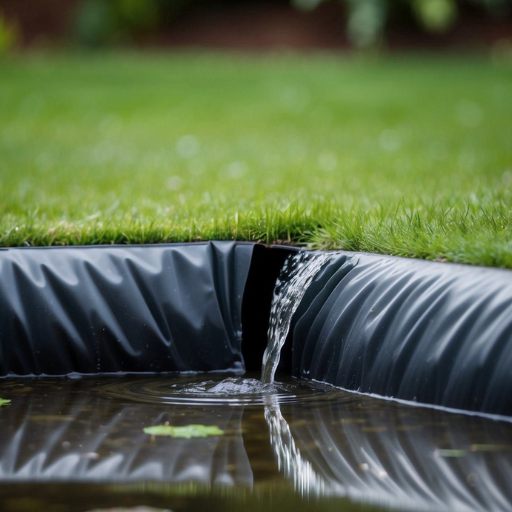
Selecting the right pond liner is essential for ensuring a long-lasting and functional pond. Here are the key factors to consider:
- Material Type
- EPDM Rubber: Durable, flexible, and resistant to UV rays, this is a popular choice for various pond types.
- PVC: A cost-effective option, suitable for smaller or temporary ponds.
- HDPE: Known for its strength and puncture resistance, ideal for larger or more permanent installations.
- Pond Size and Shape
- Measure the length, width, and depth of your pond accurately to determine the required liner size.
- Choose a flexible material like EPDM for complex shapes or curves.
- Environmental Factors
- If your pond will be exposed to heavy sunlight, opt for UV-resistant materials.
- For areas with rocky or uneven terrain, thicker liners provide added protection.
- Budget and Longevity
- Balancing affordability with durability is key. While EPDM may cost more upfront, its long lifespan often saves money in the long run.
By considering these factors, you can select a pond liner that meets your project’s needs, ensuring a reliable and sustainable pond setup.
Factors to Consider in Selecting a Pond Liner
When selecting a pond liner, it’s essential to evaluate various factors to ensure optimal performance, cost-efficiency, and sustainability. Below are the critical considerations:
- Type of Material
There are diverse materials available for pond liners, each offering different advantages:
-
- EPDM (Ethylene Propylene Diene Monomer): Highly flexible, UV-resistant, and environmentally friendly, with a lifespan of over 20 years.
- PVC (Polyvinyl Chloride): Cost-effective and easy to install but has a shorter lifespan (10–12 years) and may release harmful chemicals over time.
- HDPE (High-Density Polyethylene): Extremely durable, puncture-resistant, and great for larger ponds; however, it’s less flexible and harder to install.
- RPE (Reinforced Polyethylene): Lightweight, very strong, and long-lasting, ideal for complex pond shapes.
- Pond Size and Shape
The liner’s dimensions must adequately accommodate your pond’s size and depth. When measuring, include an extra allowance (typically 1–2 feet) for overlaps and anchoring.
- Climate and Environmental Conditions
Climate plays a critical role in liner selection:
-
- Hot and Sunny Areas: Use UV-stabilized liners to prevent premature degradation.
- Cold Climates: Opt for flexible materials like EPDM or RPE for resistance to freezing temperatures.
- Sharp or Rocky Terrain: Reinforced liners like RPE or HDPE provide better puncture resistance.
- Water Type
Determine the kind of water your pond will hold (freshwater, saltwater, or wastewater). For example, PVC liners may degrade faster in saltwater conditions, whereas HDPE is more resistant.
- Thickness
Pond liner thickness is measured in millimeters (mil).
-
- Thicker liners (40–60 mil) are more durable and resistant to punctures, ideal for rocky areas or heavy-duty applications.
- Thinner liners (20–30 mil) are more affordable and suitable for small ponds with smooth surfaces.
- Eco-Friendliness
If you’re cultivating aquatic plants or supporting wildlife, choose non-toxic options like EPDM or RPE liners, which ensure water safety.
- Budget and Long-Term Cost
Initial costs vary by material, but durability significantly impacts long-term expenses. While EPDM and HDPE liners may incur higher upfront costs, their extended lifespan can save considerable money over time.
- Installation Requirements
Consider your skill level or professional assistance needed. Flexible liners such as EPDM are easier to install than more rigid materials like HDPE.
By evaluating these factors and aligning them with your specific needs, you can confidently choose a pond liner that offers durability, performance, and value, ensuring your pond remains a thriving and functional feature for years to come.
Cost Implications: HDPE vs EPDM
When considering the cost implications of HDPE and EPDM pond liners, it is essential to account for not just the initial material price but also installation, maintenance, and longevity. HDPE liners are generally more cost-effective in terms of raw materials, with prices typically ranging from $0.50 to $0.70 per square foot. This affordability makes HDPE a popular choice for large-scale or budget-conscious projects. However, HDPE liners are more rigid, requiring skilled installers and specialized equipment, potentially driving up labor costs.
On the other hand, EPDM liners, while more expensive initially — often priced between $0.80 and $1.20 per square foot — offer greater flexibility and ease of handling. This flexibility allows for simpler installations, reducing time and labor expenses. Furthermore, EPDM is known for its durability and elasticity, which can reduce the likelihood of replacement or extensive repairs over time, offering long-term cost savings.
Both materials have unique strengths, and the decision ultimately depends on factors such as the size of the pond, budget limitations, and the level of expertise required for installation. Balancing upfront costs with ongoing expenses is critical to determining the most cost-effective solution.
Understanding the Difference Between HDPE and EPDM Liner Materials
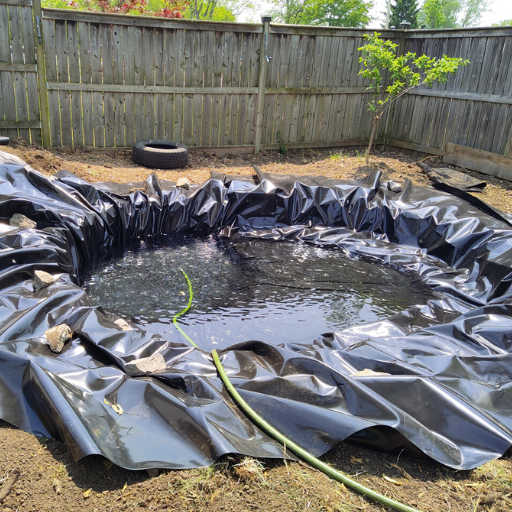
HDPE (High-Density Polyethylene) liners are known for their durability, resistance to chemicals, and affordability. They are best suited for large-scale projects due to their rigidity and ability to withstand extreme environmental conditions. However, their inflexibility can make installation more challenging, particularly in irregularly shaped ponds.
EPDM (Ethylene Propylene Diene Monomer) liners, on the other hand, are highly flexible and easy to install, even in complex pond designs. They are more resistant to punctures and adapt well to varying shapes and temperatures. While EPDM is generally more expensive upfront, its flexibility and ease of use can justify the investment for smaller or intricate projects.
Choosing the appropriate material depends on project size, shape, and budget, with HDPE excelling in industrial-scale applications and EPDM being ideal for versatile, smaller installations.
Durability and Lifespan of Each Material
When assessing durability and lifespan, both HDPE and EPDM offer notable long-term performance, though their characteristics differ based on environmental stressors and usage conditions.
HDPE (High-Density Polyethylene) is renowned for its exceptional durability in demanding environments. HDPE liners typically last 20 to 50 years, depending on UV exposure, installation quality, and chemical resistance. With a high tensile strength, HDPE resists punctures and abrasions, making it an excellent choice for industrial-scale projects subjected to mechanical stresses. Furthermore, modern UV stabilizers significantly prolong the material’s lifespan in outdoor applications, enhancing its performance under prolonged sunlight.
EPDM (Ethylene Propylene Diene Monomer), on the other hand, excels in flexibility and adaptability. EPDM liners have a similar lifespan ranging from 20 to 50 years but stand out in fluctuating weather conditions due to their elasticity and resistance to weathering. Unlike HDPE, EPDM performs exceptionally well in extreme temperatures, from scorching heat to freezing winters, while maintaining structural integrity. Unlike more rigid materials, it is less prone to splitting or cracking over time. Proper installation and minimal exposure to sharp objects or chemicals can further extend the lifespan of EPDM liners.
Both materials benefit from advancements in manufacturing technology, ensuring they are more efficient and sustainable. While HDPE showcases unmatched strength for large-scale projects, EPDM’s flexibility and resilience make it better suited for complex or smaller designs.
Chemical Resistance and Environmental Impact
When considering chemical resistance and environmental impact, I find that both HDPE and EPDM offer notable advantages. HDPE is highly resistant to a wide range of chemicals, making it ideal for environments exposed to harsh substances. On the other hand, EPDM showcases excellent resistance to UV radiation and certain chemicals, such as acids and alkalis, which is essential for applications requiring long-term durability in outdoor settings. From an environmental perspective, both materials have sustainable qualities, with HDPE being recyclable and EPDM designed for longevity to reduce waste.
Puncture and UV Resistance Comparisons
When comparing puncture and UV resistance, I find that HDPE offers excellent puncture resistance due to its rigid structure, making it ideal for areas prone to physical stress. However, EPDM stands out for its superior flexibility, which allows it to absorb impacts without tearing as easily, especially in dynamic environments. For UV resistance, EPDM excels with its natural durability against prolonged sun exposure, whereas HDPE can degrade over time unless treated with stabilizers. Considering these factors, my choice would hinge on the specific application’s need for either rigidity or flexibility and the extent of UV exposure involved.
Exploring Other Types of Pond Liners
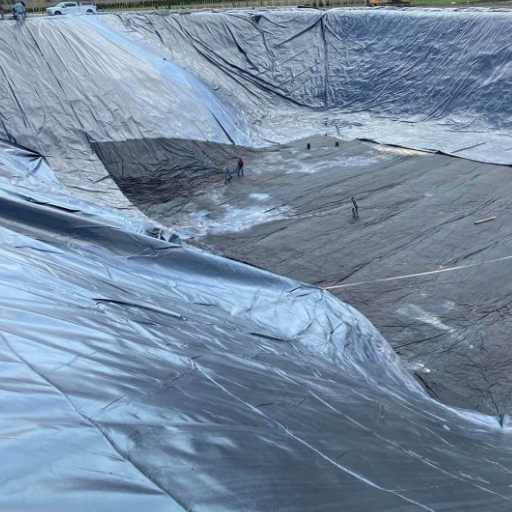
When exploring other types of pond liners, PVC (Polyvinyl Chloride) and RPE (Reinforced Polyethylene) are worth considering. PVC liners are highly flexible and easy to install, making them ideal for smaller ponds or irregular shapes. However, they are less durable over time compared to alternatives, especially when exposed to UV light without proper reinforcement. RPE liners, on the other hand, offer exceptional strength, flexibility, and puncture resistance. They are lightweight, long-lasting, and environmentally friendly, making them suitable for larger, more demanding pond projects. The choice between these options depends largely on the pond’s size, shape, and environmental requirements.
Introduction to Reinforced Polyethylene (RPE)
Reinforced Polyethylene (RPE) is a cutting-edge material extensively used in pond lining, water containment, and environmental projects due to its exceptional durability and versatility. Unlike other traditional materials, RPE liners boast high tensile strength, which can withstand significant stress without tearing or puncturing. This makes them highly suitable for demanding conditions, such as large-scale ponds or reservoirs.
One of the standout features of RPE is its lightweight nature. Standard RPE liners are up to three times lighter than materials such as PVC or EPDM while maintaining superior structural integrity. This reduces installation time significantly and lowers shipping costs. Furthermore, RPE has a low permeability rate, providing excellent resistance to water leakage. Its lifespan often exceeds 20 years when properly installed and maintained, even under consistent exposure to sunlight, due to advanced UV-resistant coatings.
Environmentally, RPE is a sustainable choice. It is non-toxic and free from harmful plasticizers, ensuring it does not leach chemicals into surrounding water or soil. This makes it ideal for applications involving fish or wildlife ponds. Additionally, its ability to resist extreme temperatures, ranging from -70°F to over 200°F, ensures reliable performance in various climates.
RPE’s versatility extends beyond water containment; it’s widely used in landfill caps, wastewater treatment facilities, and secondary containment systems due to its robust structural properties. These qualities make RPE a leading choice for industries focused on combining long-term performance with sustainability.
Considerations for PVC Pond Liners
PVC (Polyvinyl Chloride) pond liners are a popular option for water containment due to their flexibility, affordability, and ease of installation. Ideal for small to medium-sized ponds, these liners can conform to irregular shapes, making them suitable for decorative water features or backyard ponds. Typically, PVC liners are around 20 to 40 mils thick and offer good puncture resistance, though they are more prone to punctures compared to RPE liners.
One of the key considerations for PVC liners is their limited UV resistance. Prolonged exposure to sunlight can cause the material to weaken and degrade over time, potentially leading to leaks. Therefore, it is highly recommended to cover the liner with rocks, soil, or plant material to shield it from direct UV rays. Additionally, while PVC liners can tolerate low temperatures, they become less flexible in colder climates, which might affect their durability in areas with freezing conditions.
PVC liners are generally cost-effective, with prices starting as low as $0.50 per square foot, depending on thickness and quality. However, their lifespan is shorter than more robust materials like RPE and EPDM, typically lasting 10 to 15 years with proper care. For environmental considerations, PVC is not as eco-friendly as some other options, as its production involves chemicals that can have a higher environmental impact. However, advancements in manufacturing are gradually reducing these concerns.
Proper underlayment is crucial for PVC pond liners to prevent punctures from sharp objects like rocks or roots beneath. Installing a geotextile fabric along with the liner can significantly enhance its durability. Despite some limitations, PVC pond liners remain an excellent choice for budget-conscious projects where flexibility and simplicity are prioritized.
Using Geomembranes in Pond Construction
When using geomembranes in pond construction, I focus on selecting materials that align with the project’s specific requirements, such as durability, flexibility, and environmental safety. Geomembranes, like HDPE, LDPE, or reinforced polypropylene, offer excellent impermeability and longevity. I take careful steps to ensure proper site preparation, including clearing debris and using a protective underlayment to prevent punctures. Additionally, I prioritize professional installation techniques to minimize seams and ensure a watertight result. This approach helps create a reliable and sustainable pond system.
Reference Sources
- Lecture 22 Geosynthetic Clay Liners and Geomembranes – MIT OpenCourseWare – Discusses the flexibility and applications of materials like HDPE and EPDM in pond liners and other uses.
- The Potential for Micro-Algae and Other “Micro” Applications – Compares HDPE and EPDM, highlighting HDPE’s toughness and cost-effectiveness.
- Breaking Down the Walls – Arizona Water Resources Research Center – Includes insights into the use of geomembranes like HDPE and EPDM in water management.
Top HDPE Ground Protection Mats Suppliers in China
Frequently Asked Questions (FAQs)
Q: What’s the difference between HDPE and EPDM pond liners?
A: HDPE (High-Density Polyethylene) and EPDM (Ethylene Propylene Diene Monomer) are both popular pond liner materials. HDPE is a type of geomembrane that is highly durable and resistant to UV radiation, making it suitable for outdoor applications. EPDM liners are made from synthetic rubber, which makes them more flexible and able to conform to the shape of the pond.
Q: Which pond liner is more tear-resistant, HDPE or EPDM?
A: HDPE liners are known for their high tear resistance and strength, making them a durable and long-lasting choice for pond liners. EPDM, being a rubber liner, is flexible but may not offer the same level of tear resistance as HDPE.
Q: Are HDPE pond liners suitable for shrimp ponds?
A: Yes, HDPE pond liners are suitable for shrimp ponds. They are impermeable, resistant to UV radiation, and can withstand various environmental conditions, making them a reliable choice for shrimp farming.
Q: How do the costs of HDPE vs EPDM pond liners compare?
A: The cost of EPDM pond liners tends to be higher than HDPE due to their flexibility and ease of installation. However, HDPE is generally more affordable and provides excellent durability, making it a cost-effective option for many applications.
Q: Are EPDM liners safe for swimming ponds?
A: Yes, EPDM liners are safe for swimming ponds. They are non-toxic and flexible, allowing them to create a smooth surface that is comfortable for swimmers.
Q: What are the advantages of using a geomembrane liner like HDPE in farm ponds?
A: Geomembrane liners like HDPE offer several advantages for farm ponds, including high durability, UV resistance, and impermeability. These properties help prevent water loss and provide a stable environment for aquaculture and irrigation purposes.
Q: Can HDPE liners be used in different pond applications?
A: Yes, HDPE liners can be used in different pond applications, including decorative garden ponds, farm ponds, and industrial water containment. Their versatility and strength make them suitable for various uses.
Q: How flexible is EPDM compared to other pond liner materials?
A: EPDM is more flexible than many other pond liner materials, allowing it to easily conform to the shape of the pond. This flexibility makes it ideal for complex pond designs and installations.
Q: Are pond liners available in various thicknesses?
A: Yes, pond liners, including both HDPE and EPDM, are available in various thicknesses. This allows you to choose the best liner thickness based on the specific requirements of your pond project.
Q: How do I make the best decision between HDPE and EPDM pond liners?
A: To make the best decision, consider factors such as the specific application, budget, desired durability, and flexibility. HDPE is generally more cost-effective and durable, while EPDM offers more flexibility and ease of installation.


